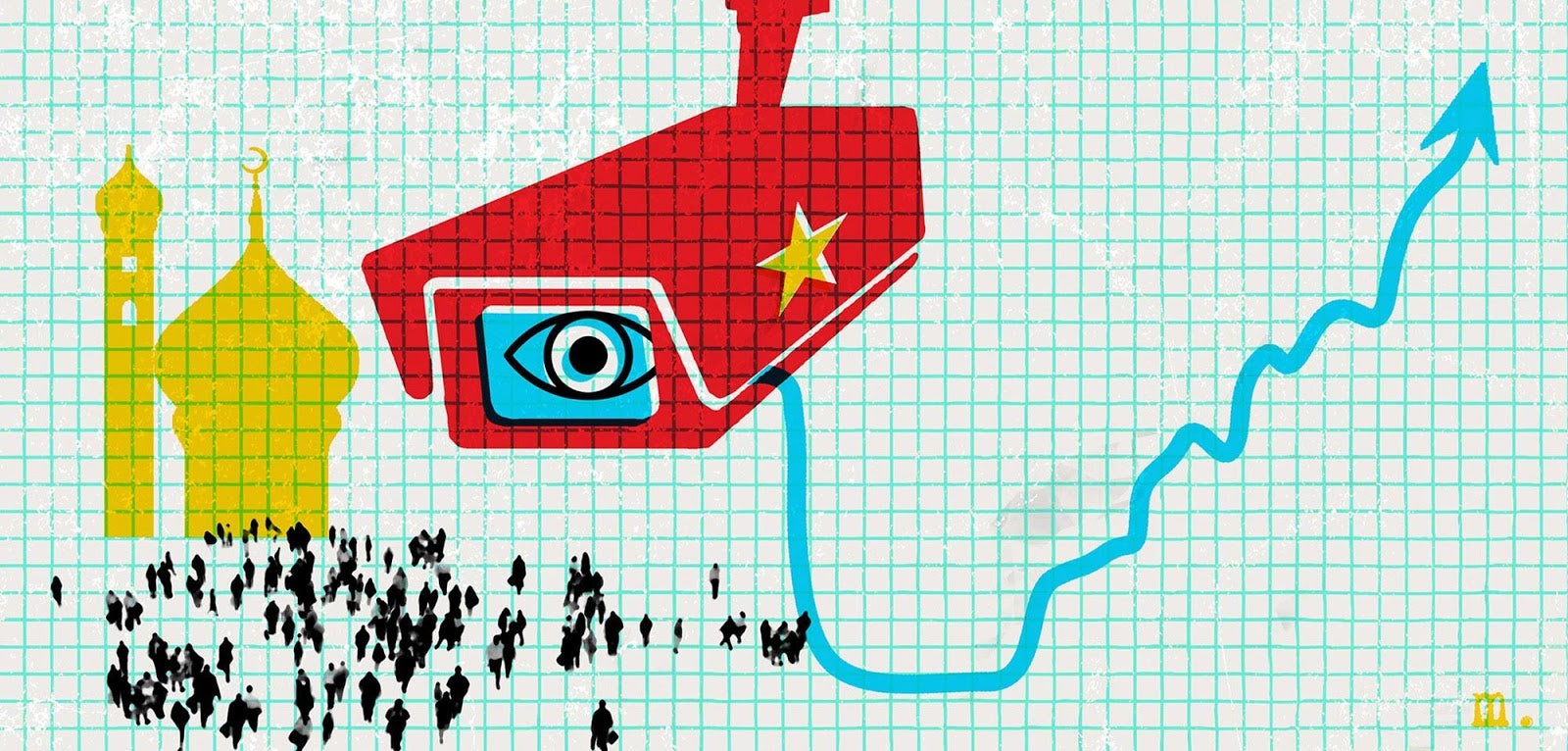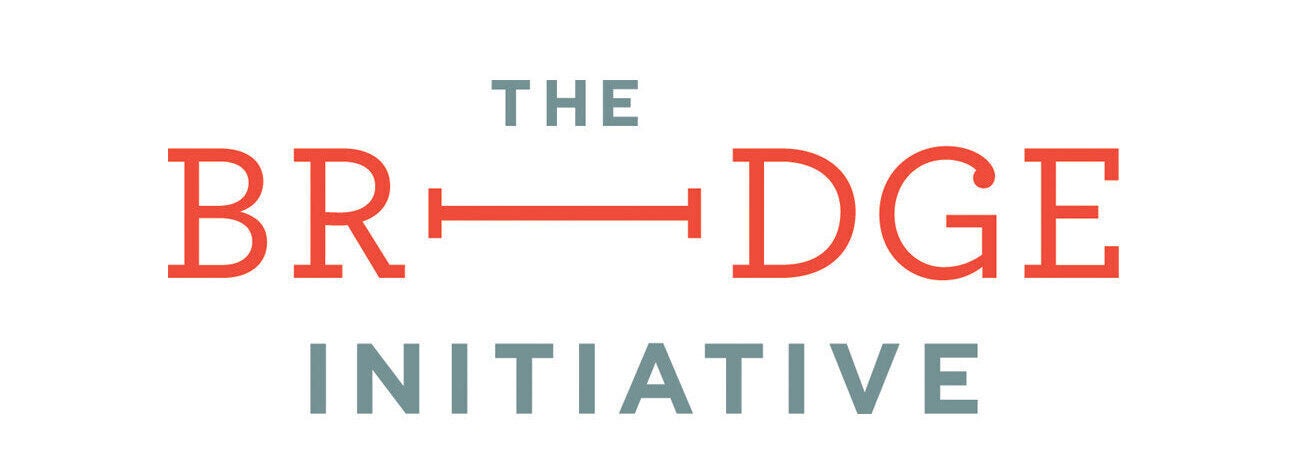
Source: Foreign Policy
China justifies its Concentration Camps using “War on Terror” discourse
China has adopted and intensified Islamophobia, identifying the practice of Islam as extremist and the root cause of terrorism, to justify repressive measures aimed at erasing the Uighur Muslim identity.
As a result of the work of activists and human rights groups calling attention to the deplorable situation in the autonomous Xinjiang region of northwest China, growing media attention has provided a window into the government’s intrusive policies. These include high-tech surveillance and government informants in what can only be described as a police state. In 2017, multiple investigations revealed a major construction boom and expansion of detention centers, where an estimated one million Uighur Muslims are being tortured, forced to renounce their faith, and indoctrinated with government party propaganda.
Research from the US-based Jamestown Foundation found that spending on security-related facility construction rose by 213% between 2016 and 2017. Further, a November 2018 Reuters investigation using forensic analysis of satellite images of 39 of these facilities corroborates this rapid expansion of new security facilities in the Xinjiang region. China’s rationale for calling these camps “training centers” does not hold true given that spending on vocational training in Xinjiang in 2017 actually decreased by 7%. In contrast, the spending on security-related construction increased by nearly $2.9 billion.

Initially, the Chinese government denied the existence of these camps, but with mounting international pressure and growing evidence to the contrary, authorities in the Xinjiang region in 2018 revised legislation permitting the use of the “vocational skills and educational training centers” for “people influenced by extremism.” Government officials described the detention centers as “people-oriented” facilities providing legal and educational training, and centers to tackle religious extremism through “thought transformation.” In November 2018, China’s Foreign Minister told reporters “not [to] listen to gossip or rumor,” and defended the camps, stating they are “completely in line with the direction the international community has taken to combat terrorism…If we can take care of prevention, then it will be impossible for terrorism to spread and take root.”
In this statement, Wang Yi utilized the “war on terror” discourse to justify concentration camps detaining up to one million Muslims. Following 9/11, the United States and other Western governments targeted by militant attacks developed a “war on terror” discourse, identifying Islam as a dangerous ideology responsible for terrorism and in need of “reform.” This discourse includes terms with no unified definitions, such as “radicalization,” “extremism,” “radical Islam,” and “terrorism,” that are often subjectively applied by those in power. Such framework has been used to institute and give reason for countering violent extremism programs, which are predicated on the belief that there are measurable/identifiable indicators of radicalization: often these indicators are associated with Islamic beliefs and practices. Thus, entire Muslim communities are viewed through a criminal lens and rendered suspect simply for practicing their faith.
In defending its actions, the Chinese government also pathologized Islam, describing it as a “mental,” and contagious “ideological illness” of which people need to be cured.
Members of the public who have been chosen for reeducation have been infected by an ideological illness. They have been infected with religious extremism and violent terrorist ideology, and therefore they must seek treatment from a hospital as an inpatient. … The religious extremist ideology is a type of poisonous medicine, which confuses the mind of the people. … If we do not eradicate religious extremism at its roots, the violent terrorist incidents will grow and spread all over like an incurable malignant tumor.
– Excerpt from an official Communist Party audio recording
China’s use of “religious extremism” builds on the war on terror logic, which views Islam and Muslims as inherently suspect and potentially violent. The Chinese government defends its adoption of large-scale authoritarianism by stating it aims to “suppress the threat of Uighur separatism and extremism.” The government’s broad definition of “religious extremism” encapsulates any observance of the Islamic faith. For example, authorities in the city of Hami in Xinjiang ordered Uighurs to hand themselves in if they followed “problematic” Islamic practices such as abstention from alcohol. When officials talk of “curing” Muslims from this “illness” of Islam, it involves a campaign of repression resulting in the criminalization and elimination of any expression of Muslim identity. These efforts include:
- Forcing Uighur Muslims to eat pork and drink alcohol, which are forbidden in Islam;
- Banning the burqa and “abnormal beards”;
- Shutting down mosques;
- Banning religious names for Muslim babies;
- Forcing Muslim families to hand over Qur’ans;
- Banning Muslim children from Qur’an classes;
- Forbidding Islamic burials;
- Forbidding individuals from using the common Islamic greeting of As-Salam Alaikum;
- Banning the promotion of halal products;
- Banning the observance of Ramadan, the Islamic holy month of fasting;

Many of the arguments surrounding extremism rely on the concept of “radicalization.” In a 2012 paper, Arun Kundnani interrogated the construction of this concept, which was part of the “war on terror” discourse. It was developed by Western academics, often in the service of policy-makers, in response to what they termed ‘new terrorism,’ of ‘Islamic extremists.’ Walter Laqueur, identified as the “founding father of terrorism studies,” described this new terrorism, as distinguishable from “older, political forms of terrorism, inspired by nationalism, communism or fascism,” because ‘Islamic fundamentalist violence’ was ‘rooted in fanaticism’.[1] Radicalization, as a concept, came about in an attempt to study the process that leads to terrorism but focused exclusively on theological and/or cultural components. A 2013 paper by Amna Akbar for the UC Irvine Law Review found that radicalization theory “suggests that the path from Muslim to terrorist is a predictable one produced by or correlated with religious and political cultures of Muslim communities.”[2] China’s policies aimed at Muslim communities follow this line of thought.
Studies of “radicalization” and “extremism” view the Islamic faith itself as a precursor to an individual adopting violence. Rather than interrogating the root causes of terrorism in core sociopolitical grievances, radicalization discourse focuses on psychological or theological factors. Radicalization discourse as developed by American and European academics includes “anti-western attitudes, religious fundamentalism, and self-segregation” as “factors likely to drive individuals towards support for terrorism.”[3] Kudnani concludes that this discourse falsely establishes a theological approach to radicalization, which is an “unexamined and unproven assumption.”[4] CVE (“countering violent extremism”) programming, along with media narratives in the West, promote the assumption that Islamic practices are connected to or provide the explanation behind “extremism,” “radicalization,” and “terrorism.” Efforts by Western governments to tackle or prevent “extremism,” have often resulted in curbing expressions of Muslim identity, e.g. the burqa/face veil bans in France, Denmark, and many other European countries.

This discourse on “extremism” and “radicalization” is utilized by the Chinese government to justify the establishment of concentration camps, framing them as “preventative” measures needed to root out “terrorism.” Whereas CVE programs focus on “monitoring and influencing the political and religious cultures of Muslim communities in the United States,”[5] in China, countering extremism and radicalization measures seek not to influence but to eliminate Muslim identity within the Xinjiang region.
In China, the practice of Islam is equivalent to engaging in extremism and terrorism. In an effort to “root out” what authorities view as the problem, the government has instituted harsh policies aimed at curbing and eliminating the expression of Muslim identity. Human Rights Watch, U.S. Senators and House Representatives, and the Council on Foreign Relations have all described Xinjiang as a police state where intrusive surveillance measures include a registry of DNA samples and blood types and installation of 40,000 facial recognition cameras. The government has also deployed “flocks of drones disguised as birds to surveil” in an operation codenamed “Dove.” The intrusion has extended as the state established a “cultural exchange” programme thrusting government informants into the homes of Uighur Muslims.
Methods of surveillance of Muslims, while nowhere near as intrusive and widespread as in China, have been instituted in the United States, such as the NYPD’s suspicionless surveillance program where indicators of “radicalization” included Islamic religious practices, such as regularly attending a mosque, growing a beard, fasting during Ramadan, wearing a hijab, etc. Whereas in the United States, such programs have led to violations of civil liberties resulting in the stigmatization and criminalization of Muslim communities, in China they have resulted in the expansion of a police state and institution of concentration camps.
The Chinese government has used disturbing language to explain its reasoning for the camps, claiming they are needed to “modernize” Uighurs and turn them into “normal people.” There is fear this campaign of repression will expand to other Muslims communities. In November 2018, The Telegraph reported that “local authorities in Ningxia province, home to China’s Hui Muslim minority, have signed a “cooperation anti-terrorism agreement” with Xinjiang officials to “learn from the latter’s experiences in promoting social stability.”
China’s view that the practice of Islam is a precursor or the root of terrorism and extremism builds on the same line of counter-radicalization thought produced in Western academic and policy circles. China has used this unfounded, unsupported, and Islamophobic discourse to defend its institution of large-scale concentration camps and establishment of a police state targeting Uighur Muslim communities in the Xinjiang region.
[1] Kundnani, Arun, Radicalization: the journey of a concept, Race & Class, Institute of Race Relations, Volume: 54 issue: 2, page(s): 3-25, September 18, 2012, pg. 4, https://journals.sagepub.com/doi/abs/10.1177/0306396812454984?journalCode=racb
[2] Akbar, Amna, Policing “Radicalization”, 3 U.C. Irvine L. Rev. 809 (2013).
Available at: https://scholarship.law.uci.edu/ucilr/vol3/iss4/4
[3] Kundnani, Arun, Radicalization: the journey of a concept, Race & Class, Institute of Race Relations, Volume: 54 issue: 2, page(s): 3-25, September 18, 2012, pg. 9, https://journals.sagepub.com/doi/abs/10.1177/0306396812454984?journalCode=racb
[4] Ibid, pg. 16
[5] Akbar, Amna, Policing “Radicalization.”

 Search
Search